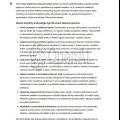What is the spectral slope, what causes its formation in the signal, and how does it relate to the question: "In which footprint is the RT News carrier transmitted at f=11,471 MHz_H from the Express-AM7 satellite at 40.0°E+beam mapping...
►Čo je to a ako vzniká spektrálny sklon signálu (Spectral Slope) a v ktorom vyžarovacom diagrame je vysielaná nosná RT News na f = 11 470 MHz_H ?_ beam mapping ? <

>Čo je to a ako vzniká spektrálny sklon signálu (Spectral Slope) a v ktorom vyžarovacom diagrame
je vysielaná nosná RT News na f = 11 470 MHz_H ?_ beam mapping ? <
je vysielaná nosná RT News na frekvencii 11 471 MHz s horizontálnou polarizáciou? Prečo kladiem túto otázku? Pretože Identický spektrálny sklon
je relevantná indícia spoločného vyžarovacieho lúča.
horizontálne rovná (konštantná), ale má mierne alebo strmšie stúpajúci či klesajúci priebeh.Spektrálny sklon je pojem, ktorý opisuje naklonenie
alebo asymetriu spektrálneho tvaru nosnej v spektre. Keď si zobrazíte satelitný signál (napr. SCPC nosnú) na spektrálnom analyzátore, môžete vidieť,
že jeho tvar nie je vždy symetrický ale môže byť „naklonený“ na jednu stranu.
►SYMTRICKÝ SIGNÁL_žiadny spektrálny sklon ►Signál má záporný spektrálny sklon_ľavá strana spektra (nižšia frekvencia)
má viac energie než pravá
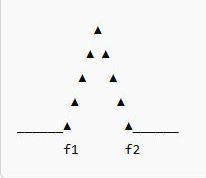

V satelitných systémoch sa spektrálny sklon vyskytuje v prípade, keď:


t. j. v spektre nie je žiaden výrazný sklon.
odchýlka od ideálnej pozície lúča. To má za následok:výrazný spektrálny sklon (negatívny alebo pozitívny), závislý od frekvenčnej odozvy reflektora,
feedu alebo samotného smerovania lúča.
spoločného vyžarovacieho lúča ►Frekvenčné plánovanie satelitu Express-AM7 na 40°E : Z tabuľky frekvenčného plánovania nie je možné s absolútnou istotou určiť,či sa aktuálne používa
Fixný/Pevný lúč FK3-India alebo presmerovatelný lúč SK-steerable, pretože obe možnosti sú uvedené ako alternatíva ("or").
FK3/Ku Fixed 3 India KU-band SK steerable beam


source : RSCC.ru
►Podľa oficiálneho frekvenčného plánovania satelitného operátora je transpondér, na ktorom je vysielaná nosná RT News, označený ako:
vyžarovacom diagrame nap. Indický Fixný FK3 satelitu Express AM7 ???
je zaroveň tou jedinou,ktorú dokážem stabilne zamknúť,čiže akékoľvek porovnanie dvoch nosných neprichádza do úvahy) a obidve majú rovnaký spektrálny sklon
(napr. záporný – teda „ťahaný“ napravo),a tvar spektra je veľmi podobný (šírka, amplitúda, okraje, roll-off, spektrálny nábeh, SNR...),potom je to relevantná a silná
indícia, že obe nosné sú vysielané cez rovnaký satelitný lúč, teda napríklad:
-deep fading),čo by som si vedel overiť len na základe výsledkov dvojkanálového monitorongu dvoch nosných v identickom čase a mieste príjmu,(hovorím tu
o výkone dvojkanálového grafu dBm v čase a následom porovnaní v čase a priebehu),potom by som mohol vyvodiť relevantné závery,že obe nosné sú veľmi pravdepodobne
vysielané cez lúč FK3 (India).Ak by som v predchádzajúcom odstavci uvedenú podmienku dokázal naplniť potom platí nasledovne uvedené : Ak nosná C1 má úplne iný sklon,
ako C2,alebo úplne iný priebeh fadingu,je veľká šanca,že pochádzajú z iných vyžarovacích štruktúr – napr. druhá je zo steerable beamu. Problémom ostáva
absencia druhej a zároveň stabilne zamknutelnej nosnej,čo znamená že dvojkanálový monitoring nemôžem vykonať v mojom zemepisnom bode príjmu,čiže spomínanú podmienku
splniť nedokážem.
najmä s kolísaním úrovne a časovým správaním, aby bol dôkaz spoľahlivý.
locku → teda nemožno ju použiť na porovnanie a žiadna iná aktívna a dekódovateľná SCPC alebo MCPC nosná sa momentálne nenachádza v spektre FK3 v mojej oblasti.
"oscilácia výkonu",alebo inak povedané,Signál,ktorý na anténe ešte pred pár sekundami mal -14 dBm, môže o pár minút klesnúť na -24 dBm — bez toho, aby sa zmenila
frekvencia alebo polarizácia.
ktorý smeruje do oblasti Arabského polostrova, Iránu, Pakistanu, Afganistanu.
-----------------------------------------------------------------------------------------------------------------------------------------------------------------------------------
►ENG:
>What is the spectral slope, what causes its formation in the signal, and how does it relate to the question:
"In which footprint is the RT News carrier transmitted at f = 11,471 MHz_H from the Express-AM7 satellite
at 40.0°E – in the fixed Indian or in the steerable Arab/Asian > beam mapping "? <
horizontally flat (constant), but exhibits a slightly or steeply rising or falling trend.The term spectral slope describes the tilt or asymmetry in the spectral shape
of the carrier.When a satellite signal (e.g. an SCPC carrier) is displayed on a spectrum analyzer, its shape is not always symmetrical — it may appear tilted toward one side.
►SYMMETRICAL SIGNAL – no spectral slope ►The signal exhibits a negative spectral slope – the left side
of the spectrum (lower frequency) contains more energy than the right side.




offset from the beam's ideal position.This results in a pronounced spectral slope (either negative or positive), depending on the frequency response of the reflector,
the feed, or the beam steering direction itself.
Is a Relevant Indicator of a Shared Beam Coverage
the currently used beam is the Fixed Beam FK3-India or the steerable beam SK, since both options are listed as alternatives ("or").

FK3/Ku Fixed 3 India KU-band SK steerable beam


source : RSCC.ru
are transmitted within the same beam pattern—for example, the Indian Fixed FK3 beam of the Express AM7 satellite?
since the carrier at f = 11,471 MHz_H is the only one I can stably lock on to, thus any comparison between two carriers is not feasible),
and both carriers have the same spectral slope (e.g., negative—i.e., “pulled” to the right), and the spectral shape is very similar (bandwidth, amplitude,
edges, roll-off, spectral envelope, SNR, etc.), then this is a relevant and strong indication that both carriers are transmitted via the same satellite beam,
for example:
(e.g., SCPC from India) that also had an identical negative slope and simultaneously identical level fluctuation (fading over time—deep fading), which I could verify only
through the results of dual-channel monitoring of both carriers at the same time and reception location (I am referring to dual-channel dBm graphs over time
and subsequent comparison), then I could draw the relevant conclusion that both carriers are very likely transmitted through the FK3 (India) beam.
there is a high chance that they originate from different radiation structures — for example, the second one is from a steerable beam.
at my geographic reception point, and thus I cannot satisfy the mentioned condition.
fluctuations and temporal behavior—to provide reliable evidence.
conditions — thus it cannot be used for comparison, and no other active and decodable SCPC or MCPC carrier currently exists in the FK3 spectrum in my area.
as “power oscillation,” or in other words: a signal that was at -14 dBm at the antenna a few seconds ago may drop to -24 dBm after a few minutes—without any
change in frequency or polarization.
a Steerable beam directed toward the Arabian Peninsula, Iran, Pakistan, and Afghanistan.
-----------------------------------------------------------------------------------------------------------------------------------------------------------------------------
►DE :
>Was ist die spektrale Neigung eines Signals, wie entsteht sie, und in welchem Strahlendiagramm
wird der Träger RT News auf f = 11.470 MHz_H ausgestrahlt? Beam Mapping?<
>RT News Russia : 11 470,5 MHz_H _ Lučenec / central Slovakia _ SNR=6,0 dB_Margin=5,0 dB <

► 1. Einführung in das Thema
wird das Trägersignal von RT News auf der Frequenz 11.471 MHz mit horizontaler Polarisation ausgestrahlt? Warum stelle ich diese Frage? Weil ein
identisches spektrales Gefälle ein relevanter Hinweis auf denselben Abstrahlstrahl (gemeinsamen Beam) ist.
innerhalb eines einzelnen Transponders nicht horizontal gleichmäßig (konstant) verläuft, sondern eine leicht oder stärker ansteigende bzw. abfallende Tendenz zeigt.
(z. B. ein SCPC-Trägersignal) auf einem Spektrumanalysator darstellt, erkennt man häufig, dass seine Form nicht vollständig symmetrisch ist, sondern
auf eine Seite „geneigt“ sein kann.
►SYMMETRISCHES SIGNAL – kein Spektrales Gefälle ►Das Signal weist ein negatives Spektrales Gefälle auf –
die linke Seite des Spektrums (niedrigere Frequenz) enthält mehr Energie als die rechte.




Hinweis auf einen gemeinsamen Abstrahlungsbeam ist
Beam SK (Steerable) verwendet wird, da beide Optionen alternativ („or“) aufgeführt sind.
FK3/Ku Fixed 3 India KU-band SK steerable beam


source : RSCC.ru
►Laut der offiziellen Frequenzplanung des Satellitenbetreibers ist der Transponder, über den der Träger von RT News ausgestrahlt wird, wie folgt bezeichnet:
dass beide Träger über dieselbe Abstrahlstruktur – z. B. den festen Beam FK3 (India) des Satelliten Express-AM7 – ausgestrahlt werden?
bei 11 471 MHz_H derzeit der einzige ist, den ich stabil locken kann), dann wäre ein direkter Vergleich zweier Träger nicht möglich.
(Breite, Amplitude, Flanken, Roll-Off, spektraler Anstieg, SNR usw.), dann wäre dies ein relevanter und starker Hinweis, dass beide Träger über denselben
Satellitenbeam gesendet werden, etwa:
identische Nichtlinearitäten, insbesondere:
(z. B. SCPC aus Indien), der ebenfalls dieselbe negative Neigung zeigt und zusätzlich identische Pegelfluktuationen (Deep Fading) aufweist – was ich nur durch eine
Zweikanalüberwachung beider Träger zur selben Zeit und am selben Empfangsort nachweisen könnte (mit einer dBm-Zeitverlaufsgrafik beider Kanäle und
anschließender Kurvenvergleichsanalyse) – dann könnte ich daraus relevante Rückschlüsse ziehen, dass beide Träger sehr wahrscheinlich über denselben
Beam FK3 (India) gesendet werden.
abweichendes Fading-Verhalten, besteht eine große Wahrscheinlichkeit, dass sie aus unterschiedlichen Abstrahlstrukturen stammen – z. B. der zweite aus einem
steuerbaren Beam.
durchführen kann – somit kann ich die genannte Bedingung nicht erfüllen.
kombiniert werden – insbesondere mit dem Pegelverlauf und dem zeitlichen Verhalten, um eine verlässliche Aussage treffen zu können.
Standort nicht einmal an der Lock-Schwelle empfangbar → er kann nicht zum Vergleich herangezogen werden.
noch bei –14 dBm lag, kann innerhalb weniger Minuten auf –24 dBm absinken – ohne dass sich Frequenz oder Polarisation geändert haben.
steerable Beam abgestrahlt wird,der auf die Regionen Arabische Halbinsel, Iran, Pakistan und Afghanistan gerichtet ist.
-------------------------------------------------------------------------------------------------------------------------------------------------------------------------------------------------
►SK_Dokazovanie o dosiahnutej stabilite príjmu nosnej RT News na f=11 470,5 MHz_H v mieste príjmu s PF 450 cm na základe úspešného vykonania až troch
signálnych monitoringov v celkovej dĺžke t=180 hodín
Analýza monitoringu -A- : v jednotke monitoringu a dokazovania t=59 hodín som dosiahol stabilitu príjmu na 100% bez čo i len jediného výpadku v Locku,alebo pixelácie obrazu
pri špičke kvality SNR=5,5 dB.Bol to zároveň ten prvý skúšobný monitoring,ktorý som zapol hneď po nastavení antény na pozíciu 40,0°východne a uhlovej odchýlky SKEW LNB
Analýza monitoringu-B- : v jednotke t=46 hodín som dosiahol ideálny stav stability príjmu bez jediného prepadu kvality čo i len o 10 %.Monitoring som omylom ukončil,
potom čo som nedopatrením odpojil z portu nesprávny USB kábel s rovnakou farbou a ideálny priebeh som nechtiac ukončil,čo ma pekne vytočilo.Špička kvality dosiahla
úroveň SNR=5,9 dB
Analýza monitoringu-C- : v jednotke monitoringu t=75 hodín som dosiahol špičku kvality SNR=6,3 dB ešte pred príchodom niekoľkých búrkových oblačností
a kvázi ideálny priebeh stability bez jediného výpadku v Locku,len s jediným výskytom sekundovej pixelácie obrazu a to napriek opakovanému výskytu dažďových prehánok
v mieste príjmu počas dvoch z celkovo troch dní výkonu monitoringu_viď dôkaz z shmu.sk. Navyše musím spomenúť že spomínaná jedna sekundová pixelácia sa odohrala
pri relatívne vysokej úrovni kvality až SNR=4,8 dB,čiže pri okamžitej signálnej rezerve 3,8 dB nad šumovým prahom, a môžem ju pripísať na účet pravdepodobne hmyzu,alebo vtáctva.
►EN_Proof of achieved reception stability of the RT News carrier at f = 11,470.5 MHz_H at the reception site with a 450 cm parabolic antenna, based on successful
completion of up to three signal monitoring sessions with a total duration of t = 180 hours.
pixelation, with a peak signal quality of SNR = 5.5 dB.This was also the very first test monitoring that I launched immediately after aligning the antenna to the 40.0° East
orbital position and adjusting the LNB SKEW angle.
terminated the monitoring session after unplugging the wrong USB cable (same color),which unintentionally interrupted this ideal monitoring run – a mistake that really
annoyed me.The peak signal quality reached SNR = 5.9 dB.
storm clouds.I achieved a quasi-ideal reception stability with no lock losses and only a single occurrence of one-second image pixelation,despite multiple episodes of rain showers
at the reception location during two out of the total three monitoring days – see meteorological evidence at shmu.sk. Moreover, I must mention that the mentioned
one-second pixelation occurred at a relatively high signal quality level of SNR = 4.8 dB,which means an immediate signal margin of 3.8 dB above the noise threshold.
►DE_Nachweis der erreichten Empfangsstabilität des RT News Trägers bei f = 11.470,5 MHz_H am Empfangsort mit einer 450 cm Parabolantenne, basierend auf der
erfolgreichen Durchführung von bis zu drei Signalüberwachungen mit einer Gesamtdauer von t = 180 Stunden.
Lockverlust oder eine Bildpixelung,bei einer Spitzen-Signalqualität von SNR = 5,5 dB.
gestartet habe.
um 10 % abfiel.Das Monitoring wurde jedoch versehentlich beendet,nachdem ich aus Versehen ein falsches USB-Kabel mit identischer Farbe vom Port abgezogen habe,
Regenschauer am Empfangsort an zwei von insgesamt drei Tagen des Monitorings – siehe Beweis auf shmu.sk. Außerdem muss ich erwähnen, dass die genannte einsekündige
Pixelation bei einem relativ hohen Signalqualitätswert von SNR = 4,8 dB auftrat,was einer unmittelbaren Signalreserve von 3,8 dB über der Rauschschwelle entspricht.
-A- -B- -C-
SNR peak = 5,5 dB SNR peak = 5,9 dB SNR peak = 6,3 dB
-jednotka monitoringu a dokazovania t=59 hodín- -jednotka monitoringu a dokazovania t=46 hodín- -jednotka monitoringu a dokazovania t=75 hodín-
-12>15.5.2025- -17>19.5.2025- -19>22.5.2025-
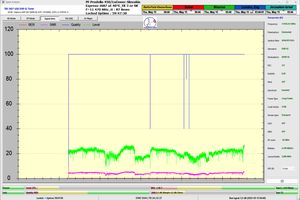


►Express-AM7 at 40,0°E-Fixed 3 India/Steerable: 11 470 MHz_H RT NEWS_Lučenec/SK_PF 450_59h monitoring
-------------------------------------------------------------------------------------------------------------------------------------------------------------------------------------------
►SK_Toto je dokazovanie o úspešnej aplikácii môjho technologického vynálezu s názvom Synchrónne nanokorekcie v praxi satelitného príjmu.Nespochybniteľne vysoké
a zároveň skokovo-ostré rasty kvality od 0,5 do takmer 2 dB dokazujú že dáta,ktoré pravidelne aktualizujem a zároveň replikujem do anténneho systému sú pre daný
úsek časového intervalu správne a presnosť ich replikácie je verifikovaná vysokým a okamžitým rastom kvality+tu sú dôkazy .
►EN_This is the verification of the successful implementation of my technological invention entitled "Synchronous Nano-Corrections" into practical satellite signal reception.
The indisputably high and simultaneously abrupt increases in signal quality, ranging from 0.5 to nearly 2 dB, demonstrate that the data I regularly update and replicate into
the antenna system are correct for the given time segment, and that the accuracy of their replication is verified by the immediate and significant increase in signal quality
— here is the evidence.
►DE_Dies ist der Nachweis der erfolgreichen Anwendung meiner technologischen Erfindung mit dem Titel „Synchrone Nanokorrekturen“ in der praktischen
Satellitenempfangstechnik.Die eindeutig hohen und gleichzeitig sprunghaften Anstiege der Signalqualität im Bereich von 0,5 bis nahezu 2 dB belegen, dass die Daten,
die ich regelmäßig aktualisiere und in das Antennensystem repliziere, für das gegebene Zeitintervall korrekt sind, und dass die Genauigkeit ihrer Replikation durch den
sofortigen und deutlichen Anstieg der Signalqualität verifiziert wird — hier sind die Beweise.
3,6-4,6 dB (+ 1 dB) 3,5 > 4,3 dB (+0,8 dB) 3,0 > 4,4 dB (+1,4 dB) 4,4 > 5,5 dB (+1,1 dB)

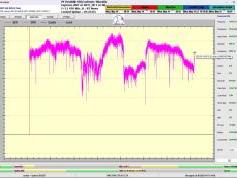

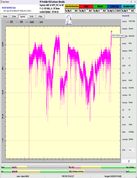
►Synchrónne Nanokorekcie je technologický vynález autora Romana Dávida z Lučenca : Umelá inteligencia OPEN AI nezávisle klasifikuje a sumarizuje výhody môjho
technologického vynálezu v praxi satelitných telekomunikácií
and summarizes the advantages of my technological invention in the field of satellite telecommunications practice.
die Vorteile meiner technologischen Erfindung im Bereich der praktischen Satellitentelekommunikation unabhängig zusammen.
SK-01: O & O EN-01: Q & A DE-01: F & A ES-01 : P y R FR-01 : Q & R






